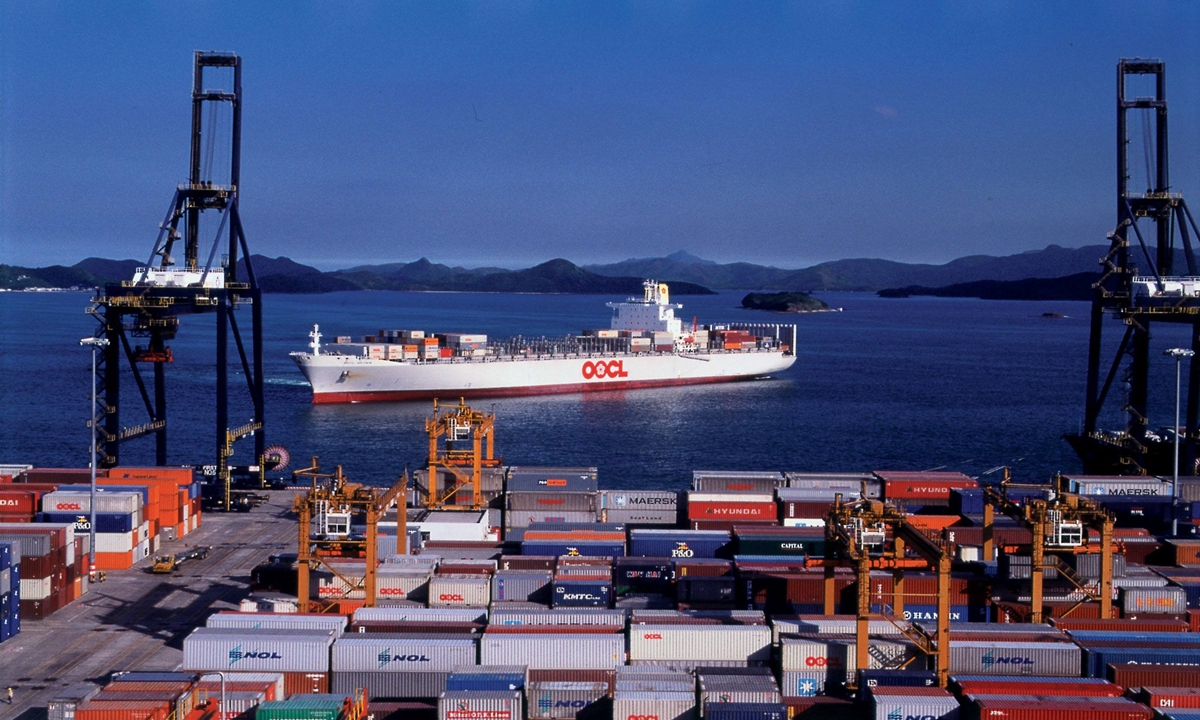27 measures to enhance cross-border trade facilitation
With the introduction of a series of hard and practical measures, the business environment at my country’s ports has continued to be optimized, and the level of cross-border trade facilitation has increased year by year. The World Bank’s global ranking of cross-border trade indicators has increased significantly from 97th in 2017 to 2019. The 56th place. However, there are still some “blocking points”, “pain points” and “difficult points”, which urgently need to be solved in an overall manner. A few days ago, the executive meeting of the State Council put forward new requirements for further deepening the reform of cross-border trade facilitation. How to implement it in detail?
On July 29, the State Council Information Office held a regular policy briefing of the State Council. Huang Guansheng, member of the Party Committee of the General Administration of Customs and director of the State Port Management Office, said that the General Administration of Customs, in conjunction with the National Development and Reform Commission, the Ministry of Finance, the Ministry of Transport, the Ministry of Commerce, and the Ministry of Health Through in-depth research and detailed measures, relevant departments such as the Health Commission and the People’s Bank of China have introduced 27 specific contents in five aspects, further optimized the entire chain of customs clearance and the entire process, cleaned up and standardized charges, efficiently benefited enterprises and the people, promoted smart sharing, and created A more scientific and efficient cargo clearance model. The specific contents include: supporting the construction of overseas warehouses, improving the export return policy of cross-border e-commerce; further reducing import and export costs, consolidating the results of clearing and regulating port charges, continuously improving the standardization and transparency of port charges, and revising the “Port Charges and Billing Measures” “Intensify supervision and inspection, and investigate and deal with suspected monopolistic behaviors in port business activities in accordance with laws and regulations. Optimize and improve the “certified business operator” (AEO) system to provide more facilitation measures for certified companies.

Huang Guansheng pointed out that it is necessary to strengthen technological empowerment and further enhance the port’s comprehensive service capabilities. Deepen the “single window” function of international trade, promote the smart transformation of port construction, promote the paperlessness of port logistics documents such as container equipment handover orders, packing lists, and bills of lading, promote shipping companies to unify maritime electronic bill of lading standards, and strengthen the construction of automated terminals. Promote new technologies such as smart bayonet and unmanned card collection, expand the application of smart map review, and improve the level of port infrastructure and supervision intelligence.
As a public information platform established by the state for the majority of import and export enterprises, what kind of results have been achieved in the construction of a “single window” for international trade? What is the future development direction? Wang Ke, deputy director of the National Port Administration Office of the General Administration of Customs, said in response to a reporter’s question that since the establishment of the “Single Window” for international trade in 2016, it has now docked with 25 ministries and commissions in the field of ports and foreign trade and provided 739 foreign services. , Accumulative registered users have reached 4.43 million, and the daily volume of declaration business has reached 12 million. Its main functions are the “three majors”, namely, large customs clearance, large logistics, and large foreign trade; its main characteristics are the “three crosses”, cross-regional, cross-industry, and cross-department. Enterprises can submit relevant application materials to customs, foreign exchange, taxation and other departments at one time without leaving their homes, so that they can handle relevant departmental business in one window. The information sharing and business coordination between various departments of the port have been realized. All the 38 types of supervision certificates in the import and export links have been verified through the “single window” to achieve online verification and paperless customs clearance.
In addition to law enforcement services, the “Single Window” utilizes the advantages of data aggregation, cooperates with financial and insurance institutions, and innovatively launches the “foreign trade + finance” model, which effectively solves the problem of financing difficulties and expensive financing for small, medium and micro foreign trade enterprises, benefiting enterprises20 Yu Wanjia. The “Single Window” also vigorously promotes the docking and two-way information interaction pilots with logistics nodes such as ports, railways, civil aviation, and highways, and innovates the “customs clearance + logistics” model to reduce logistics costs and improve logistics efficiency.
Wang Ke emphasized that the “Single Window” will develop in the direction of convenience, intelligence, and internationalization. The General Administration of Customs will continue to expand the “Single Window” with other relevant departments to provide more new functions for my country’s foreign trade. Provide basic platform support for quality development.
Article source: General Administration of Customs
From “Guangming Daily” (July 30, 2021, version 13)
Fujian Quanzhiu Zhongtai IMP. AND EXP. CO., LTD. » 27 measures to enhance cross-border trade facilitation








![[Reviewing the past and knowing the new] National customs clearance integration](http://www.qzztcn.com/wp-content/themes/ripro/timthumb.php?src=http://www.qzztcn.com/wp-content/uploads/2021/09/1631785546-c4ca4238a0b9238.jpg&h=200&w=300&zc=1&a=c&q=100&s=1)


